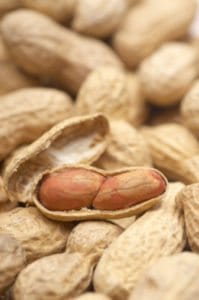 Australian researchers may have found a new recipe for an effective treatment of peanut allergy.
Australian researchers may have found a new recipe for an effective treatment of peanut allergy.
While studies using probiotics to treat food allergies have seldom been conclusive, these Melbourne scientists took a new approach, combining a large dose of probiotics, or “friendly” bacteria, alongside oral immunotherapy (OIT) for peanut allergy. The results of their study are impressive, with more than 80 percent of the peanut-allergic participants who received this treatment eventually able to eat peanuts safely.
“The treatment involves both the probiotic together with the allergen so taking the probiotic alone won’t have an effect,” lead author Mimi Tang, a pediatric allergist and assistant professor at the Murdoch Childrens Research Institute, explained to Allergic Living. “We know this because children who had other food allergies in addition to their peanut allergy did not have a change in their other allergy responses.”
The novel study, published in the Journal of Allergy and Clinical Immunology, involved 60 peanut-allergic children, ages 1 to 10. Half of them were given a daily drink of a five-gram dose of freeze-dried probiotic powder mixed into water or milk. The mixture also contained peanut protein which, in keeping with an OIT-style of therapy, was added to the mixture in tiny, then gradually increasing amounts over 18 months. The other half of the peanut-allergic children were only given a placebo therapy.
Get an insiders scoop on this study: Q&A with lead author Dr. Mimi Tang
A lot of research has focused on OIT, in which patients are given increasing doses of their allergen with the hopes of inducing tolerance, and the trials have shown promise. However, once treatment is stopped, and a period of time has passed, it is not yet clear whether people will still be able to eat their food allergen or whether an allergy will return, especially if the food in question isn’t eaten regularly.
“I noted that OIT was not very effective at inducing tolerance, although it did have immune effects towards tolerance,” says Tang. “So I thought if we add an immune modifying adjuvant, such as a probiotic together with the OIT, we might be able to create the right immune milieu to induce oral tolerance.”
The serving consumed by participants contained a high concentration of probiotics – equivalent to eating approximately 200 yogurt cups per day. Tang chose to use the probiotic lactobacillus rhamnosus because she had worked with it in other studies and saw that it increased biological processes that contribute to tolerance.
The amount of peanut protein consumed as the OIT part of the therapy increased every two weeks, until the patients reached a two-gram maintenance dose, consumed for the final 10 months of the study. Two to five weeks after the trial ended, the children underwent an oral peanut challenge to determine their level of tolerance. Children who received the combined OIT and probiotic treatment had a 20 times higher tolerance than the placebo group.
The next step is to ask the children to come back for a follow up test where they will be asked to stop eating peanut for eight weeks, and then try an oral challenge. “This will tell us whether we have truly induced long-lasting tolerance,” Tang said.
The news of this study has led to sensational headlines and news articles suggesting either that yogurt could be a “cure” for peanut allergy or that Australian scientists had “beaten” peanut allergy, though Tang herself says more research clearly is needed and that this is a highly specific mix of probiotics and OIT.
The inflammatory headlines led the CEO of FARE (Food Allergy Research & Education), Dr. James Baker, to caution that “the implications of this early study are not at all clear. In particular, it is not apparent that the probiotics played any role in this trial, as it is already known that OIT can have significant positive therapeutic effects.”
Tang agrees that it’s still early, but says that if these tests continue to be successful, this could become an effective, widespread therapy for those with peanut allergies. In a statement, she also stressed that “this treatment must be only be given under close medical supervision, as we are giving peanut to children who are allergic to peanut.”
Exclusive interview with Dr. Mimi Tang: Why She Thinks True Tolerance Can Be Achieved





